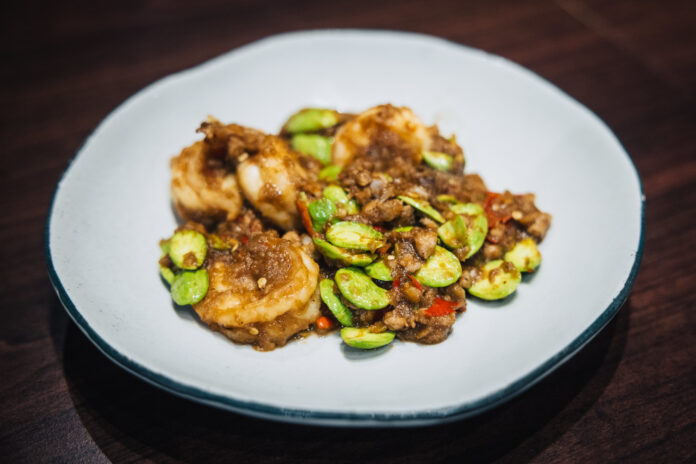A classic chicken pie is the ultimate comfort food – golden, flaky pastry encasing a creamy, generously seasoned filling of tender chicken and vegetables. This timeless dish bridges the gap between everyday cooking and special occasions, bringing warmth to chilly evenings and delighting guests at weekend gatherings.
This particular recipe comes from the kitchens at Cornish Sea Salt, where they understand that seasoning isn’t merely a final flourish but the invisible architecture supporting every other flavour. Their recipe strikes the perfect balance between simplicity and big, bold flavour, allowing you to create a perfect pie with minimal fuss but maximum taste.
Ingredients
- 2tbsp sunflower oil
- 1kg skinless chicken thigh fillets, cut into bitesize chunks
- 150g smoked streaky bacon, roughly chopped
- 2 medium leeks, sliced
- 300g mushrooms, sliced
- 3tbsp plain flour, plus extra to dust
- 400ml chicken stock
- 200ml milk
- 1tsp Cornish Sea Salt Crystals, plus extra to sprinkle
- Small bunch of thyme, leaves picked
- 500g puff pastry
- 1 egg, beaten
Instructions
- In a large pan, heat the oil over a medium heat and fry the chicken pieces until golden (you may need to do this in batches). Remove the chicken with a slotted spoon and reserve on a plate.
- Add bacon and leeks to the oil in the pan, fry until the bacon is cooked and the leeks are soft. Add the mushrooms and continue cooking for 5 minutes until lightlgolden. Stir in the flour and cook for 1 minute.
- Gradually add the stock followed by the milk. Add chicken back to the pan, with the salt and thyme. Cover and simmer for 25-30min, until the sauce has thickened and the chicken is cooked. Allow to cool a little. Preheat oven to 200°C (180°C fan).
- When ready to assemble, transfer the pie filling to a large pie dish. Dust a work surface with flour and roll out the pastry so that it is large enough to cover the pie dish. Egg wash the rim of the pie dish and drape the pastry over dish. Press the pastry onto the edge of the dish to secure. Brush the pastry with the egg wash and sprinkle over some salt.
- With a sharp knife, cut two steam holes in the middle of the pie. Cook the pie for about 30-35 minutes, until the pastry is golden brown and cooked.
Tips For Mastering The Ideal Chicken Pie
- Temperature matters profoundly for pastry success. Your ingredients should remain refrigerator-cold, your hands should stay cool, and your patience should be plentiful. The magic of flaky pastry happens precisely because cold butter creates steam pockets during baking, an effect entirely lost when warmth causes premature melting.
- Assembly requires strategic patience. Hot filling under raw pastry creates steam that sabotages crispness, so allow your filling to cool fully before construction. Consider this cooling period not as delay but as an essential structural step—the difference between a soggy base and one that maintains integrity from first bite to last.
- Egg wash serves as architectural glue between pastry layers—apply it thoroughly at every seam. This protein-rich liquid creates both adhesion and that coveted golden finish, transforming pale dough into amber magnificence. Be generous where edges meet, creating sealed pockets that contain the filling without leakage.
- Your pie needs proper ventilation. Cut generous steam vents that won’t seal themselves during baking, allowing pressure to escape rather than forcing eruptions through weakened pastry. These openings aren’t merely functional—they’re your artistic signature and prevent the dreaded soggy top crust.
- After baking comes another critical moment of restraint. Respect the 10-15 minute resting period. This patience rewards you with slices that hold their shape rather than collapse into formless puddles on the plate.
- Fresh herbs aren’t optional garnishes but essential flavor foundations that elevate a good pie to greatness. Thyme, tarragon, or sage each brings distinctive character, infusing the filling with aromatic depth that dried versions simply cannot match. Their bright notes cut through richness, creating necessary contrast.
- Overnight refrigeration allows flavors to develop complexity impossible to achieve in a rush. The proteins and aromatics mingle and mature, creating a filling that tastes somehow more complete, more intentional than one served immediately after preparation.




